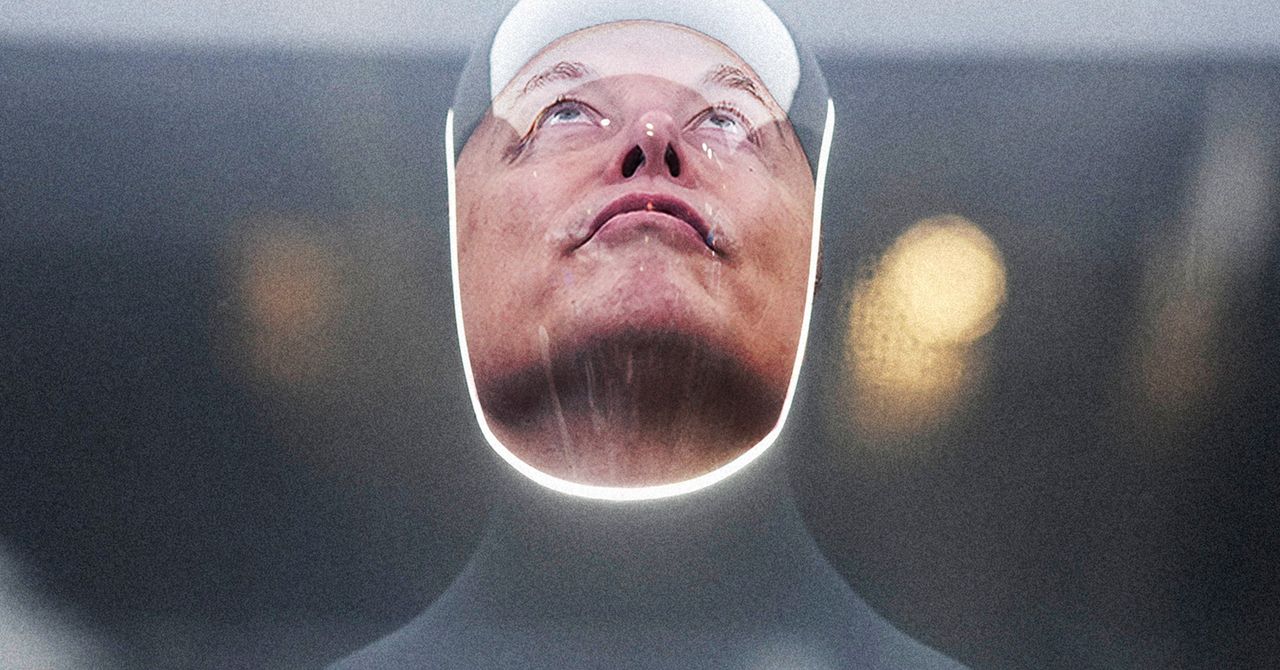Tech
Tesla Proposes a Trillion-Dollar Bet That It’s More Than Just Cars

Tesla launched a limited robotaxi service in Austin, Texas, earlier this summer, but it’s unclear whether the vehicles driving around the city are technologically advanced enough to count toward that 1 million robotaxi goal. (The proposal specifies that the robotaxis must not have a “human driver,” and the vehicles in Texas have safety monitors sitting in their front passenger seats for city rides and in the driver’s seats for highway trips.)
Meanwhile, the company is reportedly falling well short of its goal to produce 5,000 units of Optimus, its humanoid robot, by the end of this year, having produced only a few hundred. Musk has said that Optimus could one day revolutionize the global economy by replacing the majority of human labor, but The Information reported in July that the Optimus team was having particular trouble with the robot’s hands. The company’s vice president of Optimus robotics, a nine-year Tesla veteran, left in June.
“For Musk to receive the full pay package, Tesla will need to be the leader of autonomous vehicles and humanoid robots in a number of countries,” says Seth Goldstein, a senior equity analyst at Morningstar, a financial services firm.
Musk’s past pay packages have been unconventional and controversial. Unlike other CEOs, Musk does not receive annual compensation or incentives but is instead paid according to Tesla’s long-term performance. His 2018 pay package, worth more than $50 billion, is still in legal limbo after a shareholder lawsuit accusing the Tesla board of insufficient transparency and independence led to a Delaware judge striking it down last year. (Tesla responded by reincorporating in Texas.) The board granted Musk an interim $29 billion stock award last month.
The proposal demonstrates that, despite Musk’s controversial moves, Tesla’s board sees him as a crucial part of the automaker’s success and that the Musk era is far from over. “This new pay package should keep Elon Musk at Tesla for at least the next decade,” says Goldstein.
The package’s goals double down on the messages of Tesla’s “Master Plan Part IV,” a lofty mission statement posted this week exclusively on X, Musk’s social platform. Tesla’s Master Plans were once cheeky blogs posted directly by Musk onto Tesla’s website, complete with back-of-the-envelope energy cost calculations. The new plan points to Tesla’s more civilizational ambitions. “Autonomy must benefit all of humanity,” one section reads; “Greater access drives greater growth,” reads another, complete with renderings of Optimus robots serving cocktails and watering plants.
But if Musk wants to change the world and make his trillion, he’ll have to stay in his lane—and out of President Donald Trump’s, for whom he once served as “First Buddy”. The board-run committee that put together the pay proposal has met with Musk 10 times since February, the Tesla board wrote in its filing. Among other things, the filing reads, the committee received “assurances that Musk’s involvement with the political sphere would wind down in a timely manner.”
Tech
Sperm From Older Men Have More Genetic Mutations

Human semen not only accumulates genetic mutations with age; as the percentage of sperm carrying potentially serious mutations increases, so does the risk of developing diseases in offspring.
This is according to a new study by researchers at the Sanger Institute and King’s College London. The team sequenced semen samples from individuals between the ages of 24 and 75, using very high-precision technologies, and found that the male germ line (the line of cells that produce sperm) is subject to a combination of mutation and positive selection.
The scientists used a duplex sequencing technique called NanoSeq, which can detect rare mutations with a very low margin of error. This allowed them to analyze 81 sperm samples from 57 donors. The results showed that a man’s sperm adds an average of 1.67 new mutations every year.
But the most striking aspect of the study is not limited to the mere accumulation of mutations with age. The authors discovered that the male germ line is subject to positive selection. That is, certain mutations offer an advantage to cells that produce sperm and expand. They identified that many of these mutations are in genes related to developmental disorders or a predisposition to childhood cancer.
“We expected to find evidence that selection influences mutations in sperm,” said Matthew Neville, coauthor of the study published this month in the journal Nature. “What surprised us was how much the number of sperm carrying mutations associated with serious diseases increases.”
What Does This Mean for Children of Older Fathers?
The researchers estimated that about 3 to 5 percent of sperm from middle-aged and older men carry some potentially pathogenic mutation in the exome (the coding part of the genome). That represents a higher risk than previous estimates. In more concrete numbers, the estimated fraction for men in their thirties was close to 2 percent, while it reached about 4.5 percent for men in their seventies.
From the evolutionary and clinical perspective, the implications are significant. Evolutionarily, it shows that the male germ line is not simply a “machine” that accumulates errors: There is a dynamic process of mutation and selection that can modify the genetic “quality” of the sperm with the age of the father.
On the clinical side, however, it raises questions about reproductive planning, genetic counseling, and the additional risks associated with an older father. The authors argue that although the percentages remain modest, the the accumulation is not only linear but also has a selection component that favors mutations with the potential to spread.
Tech
Forget SEO. Welcome to the World of Generative Engine Optimization

This holiday season, rather than searching on Google, more Americans will likely be turning to large language models to find gifts, deals, and sales. Retailers could see up to a 520 percent increase in traffic from chatbots and AI search engines this year compared to 2024, according to a recent shopping report from Adobe. OpenAI is already moving to capitalize on the trend: Last week, the ChatGPT maker announced a major partnership with Walmart that will allow users to buy goods directly within the chat window.
As people start relying on chatbots to discover new products, retailers are having to rethink their approach to online marketing. For decades, companies tried to game Google’s search results by using strategies known collectively as search engine optimization, or SEO. Now, in order to get noticed by AI bots, more brands are turning to “generative engine optimization,” or GEO. The cottage industry is expected to be worth nearly $850 million this year, according to one market research estimate.
GEO, in many ways, is less a new invention than the next phase of SEO. Many GEO consultants, in fact, came from the world of SEO. At least some of their old strategies likely still apply since the core goal remains the same: anticipate the questions people will ask and make sure your content appears in the answers. But there’s also growing evidence that chatbots are surfacing different kinds of information than search engines.
Imri Marcus, chief executive of the GEO firm Brandlight, estimates that there used to be about a 70 percent overlap between the top Google links and the sources cited by AI tools. Now, he says, that correlation has fallen below 20 percent.
Search engines often favor wordiness—think of the long blog posts that appear above recipes on cooking websites. But Marcus says that chatbots tend to favor information presented in simple, structured formats, like bulleted lists and FAQ pages. “An FAQ can answer a hundred different questions instead of one article that just says how great your entire brand is,” he says. “You essentially give a hundred different options for the AI engines to choose.”
The things people ask chatbots are often highly specific, so it’s helpful for companies to publish extremely granular information. “No one goes to ChatGPT and asks, ‘Is General Motors a good company?’” says Marcus. Instead, they ask if the Chevy Silverado or the Chevy Blazer has a longer driving range. “Writing more specific content actually will drive much better results because the questions are way more specific.”
Tech
Instagram is going PG-13. Will that make a difference for teens?

Depending on who you are, Instagram might now seem a bit more PG-13. That’s by design.
Meta has rolled out a suite of new content moderation tools on Instagram aimed at addressing concerns that young people are seeing “unsafe content” on the social media platform. Users under the age of 18 will now by default only see content that matches what one would see in a PG-13 movie, based on the Motion Picture Association’s definition.
The rollout of these new tools, which Meta calls the “most significant update to Teen Accounts” since they were introduced in 2024, comes amid renewed concerns that the company’s platforms remain unsafe for young users. This, after social media CEOs, including Meta’s Mark Zuckerberg, have been put in the congressional hot seat over the risks their platforms pose to teens.
The question remains: Will making Instagram PG-13 for teen users really protect them?
Ursula Smartt, an associate professor of law at Northeastern University’s London campus, isn’t so sure.
“The changes apply only to teen-specific accounts, which are accounts that teens have created using their truthful birth dates or accounts that Instagram has determined,” Smartt says. “Yet, it is common for teens to lie about their ages online to avoid certain restrictions.”
Age verification laws are already being introduced in a number of countries to avoid this problem. However, the number of people using virtual private networks, or VPNs, has surged in response, Smartt explains.
“Most teenagers know and use VPNs already, which mask their internet traffic and spoof their location,” allowing them to get around age verification laws in a given country, Smartt says.
Given how resourceful teens are in evading rules regardless of whether they’re in the virtual or real world, Instagram’s new rules could actually put more pressure—and responsibility—back on parents.
Anything that minimizes the amount of unsafe content teens don’t want to see on social media is a move in the right direction, according to Rachel Rodgers, an associate professor of psychology at Northeastern who studies the impact of social media on young people. However, these new tools are much more effective as a jumping-off point for educating children about how to engage with social media.
“The more children are having conversations with their parents about what they’re doing on social media and why and how and what this means, the better the outcomes,” Rodgers says.
That’s admittedly a big ask. Most parents barely have enough time to watch along during their children’s screen time, she says, let alone every time their teen hops on Instagram. But the sooner parents can start talking about how to use social media with their children, the better. Those conversations help young people develop critical skills, like how to detect intent behind what people are saying and posting on social media. That’s integral for learning how to then interact with and respond to people online in a healthy way, Rodgers says.
There are options for making the platform even more restrictive, and Rodgers admits it can be tempting for parents to just turn on these settings and let Meta’s designers do their job. It’s much better for parents to approach these new tools collaboratively and make it a conversation.
“That’s when you’re explaining to teens why some content would be restricted,” Rodgers says. “Why would you want them to see it? Why might you not want them to see it?”
Those conversations might reveal something surprising: Parents and their children are more aligned than either might think when it comes to content on social media.
“[Teens are] generally not trying to go view things that we would consider really outside of their age,” Rodgers says. “They’re quite happy to not be pushed too much on that. They find it uncomfortable.”
This story is republished courtesy of Northeastern Global News news.northeastern.edu.
Citation:
Instagram is going PG-13. Will that make a difference for teens? (2025, October 21)
retrieved 21 October 2025
from https://techxplore.com/news/2025-10-instagram-pg-difference-teens.html
This document is subject to copyright. Apart from any fair dealing for the purpose of private study or research, no
part may be reproduced without the written permission. The content is provided for information purposes only.
-

 Tech1 week ago
Tech1 week agoUK police to upgrade illicit asset recovery system | Computer Weekly
-

 Tech5 days ago
Tech5 days agoWhy the F5 Hack Created an ‘Imminent Threat’ for Thousands of Networks
-

 Tech6 days ago
Tech6 days agoWhat Is Google One, and Should You Subscribe?
-

 Tech1 week ago
Tech1 week agoMassive UK dieselgate lawsuit reaches court
-

 Fashion1 week ago
Fashion1 week agoUS brand Ralph Lauren reports 2025 sustainability progress
-

 Tech2 days ago
Tech2 days agoHow to Protect Yourself Against Getting Locked Out of Your Cloud Accounts
-

 Tech1 week ago
Tech1 week agoWhen does it pay for housing associations to replace water and sewage pipes?
-

 Tech1 week ago
Tech1 week agoWIRED’S Favorite PC Monitor Is $75 Off
















